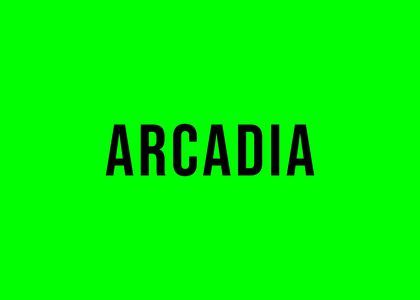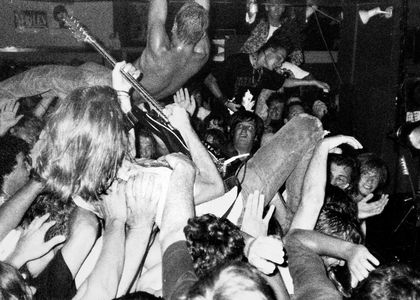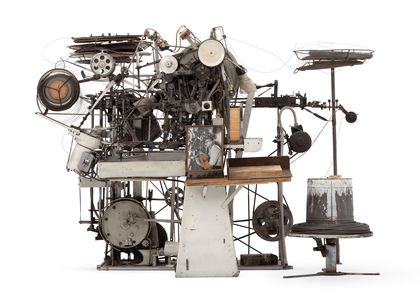“We look at art as a way of thinking – and because of that it can always change.”
– Hesam Rahmanian
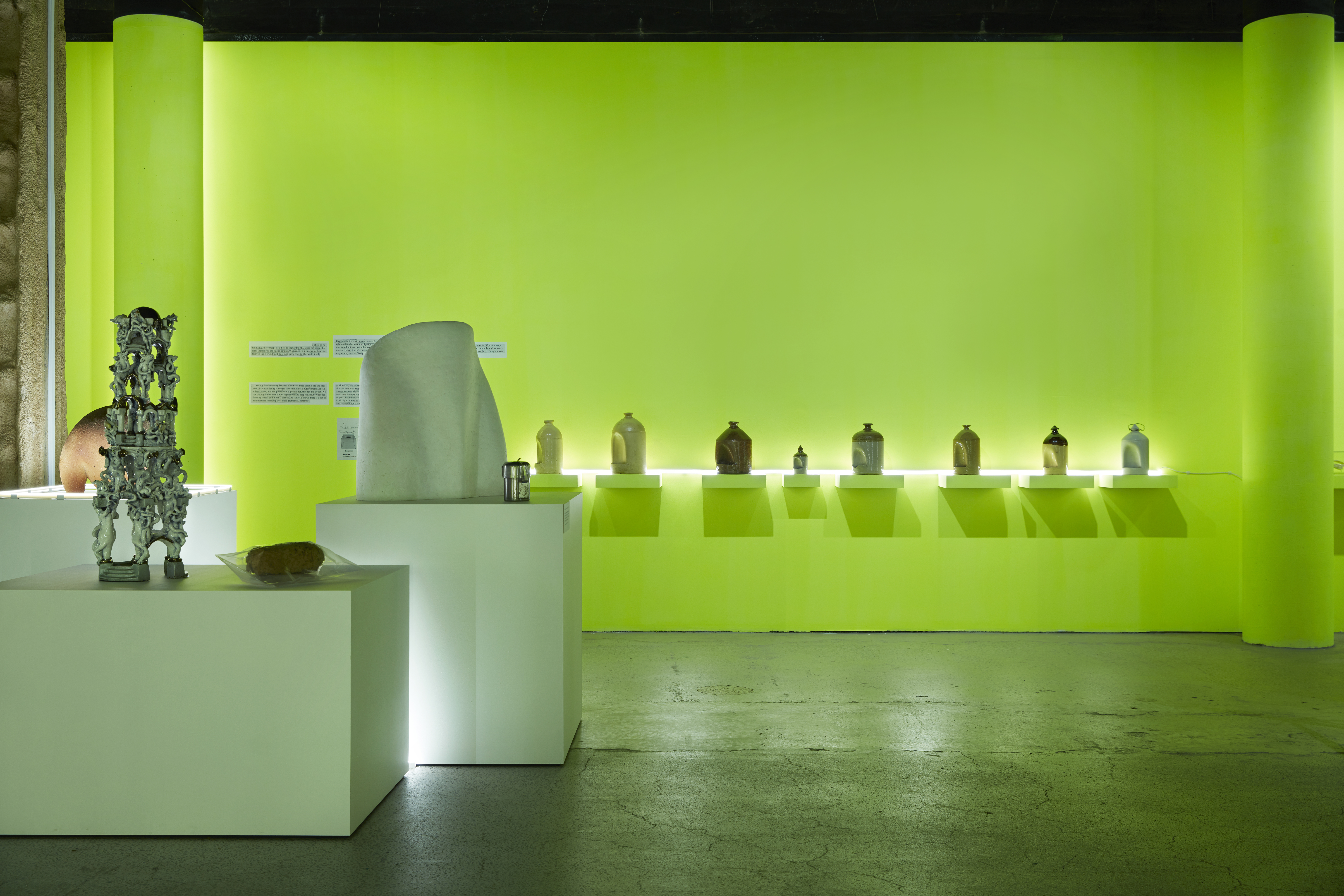
In March 2020, the Powerhouse Museum launched the results of an exciting collaboration with the 22nd Biennale of Sydney, NIRIN. The resulting exhibition, I Prefer Talking to Doctors About Something Else, was the first major creative partnership between our Museum and the three-month contemporary art event. The project provided the opportunity for our teams to work closely with the three Dubai-based artists Ramin Haerizadeh, Rokni Haerizadeh and Hesam Rahmanian (known to the team as RRH).
Ramin, Rokni and Hesam’s collaborative work was created using a wide-ranging selection of artefacts from the Powerhouse Museum’s collection. Incorporating and disorganising objects, the artists made a sweeping arc across themes of grief, the body, and healing to present their ideas and thoughts on aspects of contemporary society.
A distinctive aspect of this exhibition, was the ‘live installation’ approach, which they referred to as a ‘performance’. For RRH, the wholly collaborative and evolving process of working with museums and galleries, friends and the public is an integral part of their artistic practice. To give you some insight into some of the creative thinking and experimentation behind the I Prefer Talking to Doctors About Something Else exhibition, I’ll share some of the activities of the project team during the lead up to the exhibition opening.
Research
The artists’ creative process with the Powerhouse Museum staff and collection began with their exploration of the Museum’s Online Collection. In piecing together groupings of objects, the artists began building storylines, object groupings and design concepts which they prototyped in their home studio in Dubai.

Collaboration
Lead Curator, Katie Dyer, and Exhibition Coordinator, Kate Ford met with RRH on a weekly basis via video chat. Along with regular email communication, the artists and Museum team shared ideas, image references and voice notes via Whatsapp. With a very short time frame to deliver a large installation, the weekly meetings regularly reviewed project progress including revising object selections, researching histories, reviewing conservation assessments, developing design and layout concepts and revising statements and texts about the ideas forming for the installation. The object list started with around 300 objects for discussion and so the editing process did demand a lot of communication and conversation to realise the final selection of 89 objects, of which you can see a sample below.
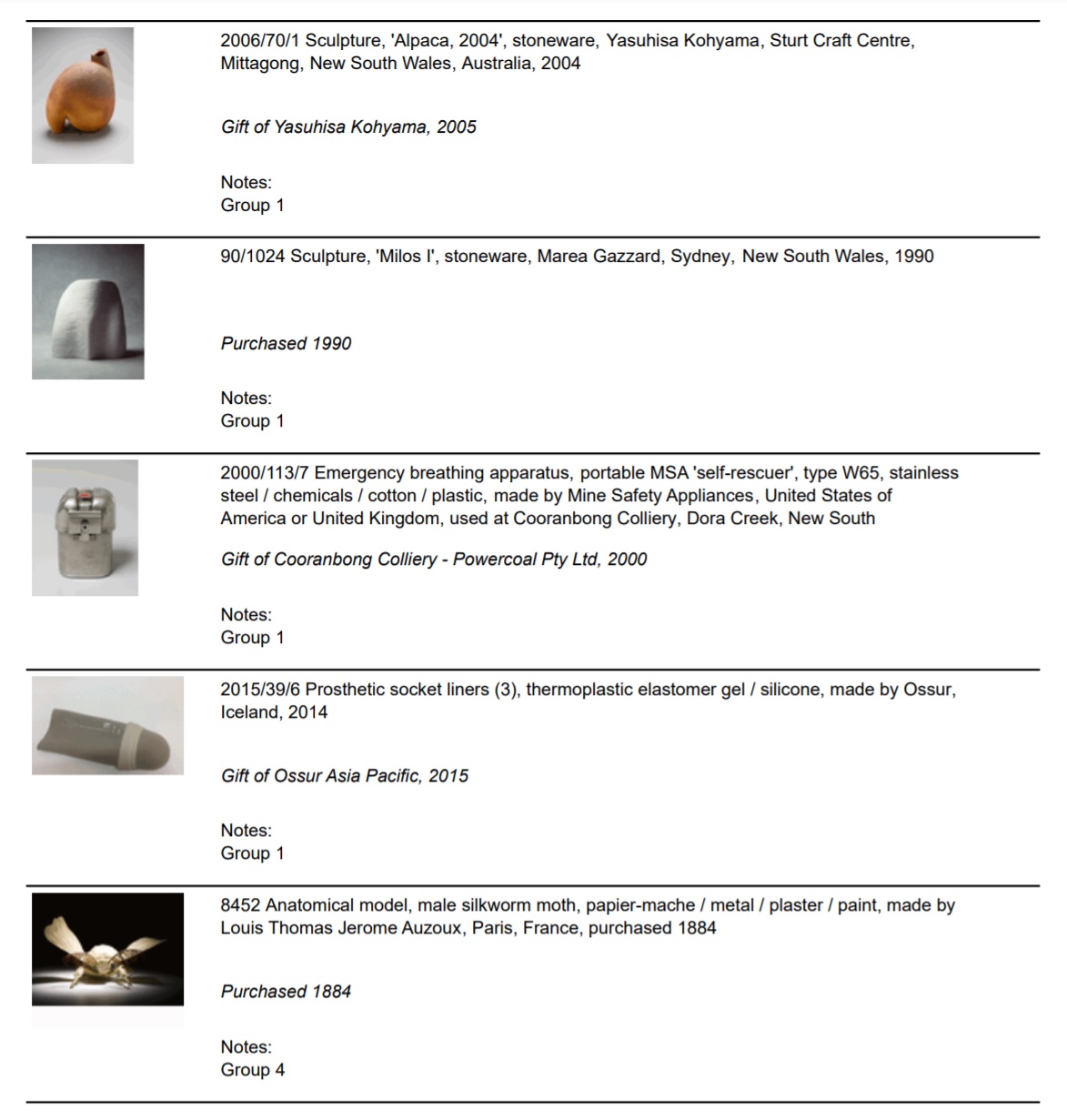
The Museum’s collection management teams undertook final assessment of the objects ahead of the installation period. This involved our conservators reviewing the current condition of each object along with recommendations for any required treatment prior to display or requirements such as display mounts or maximum lux (light) levels. In addition, our registration team reviewed all collection records to make recommendations for the safe and secure display of the objects as well as update and expand upon the online collection documentation.
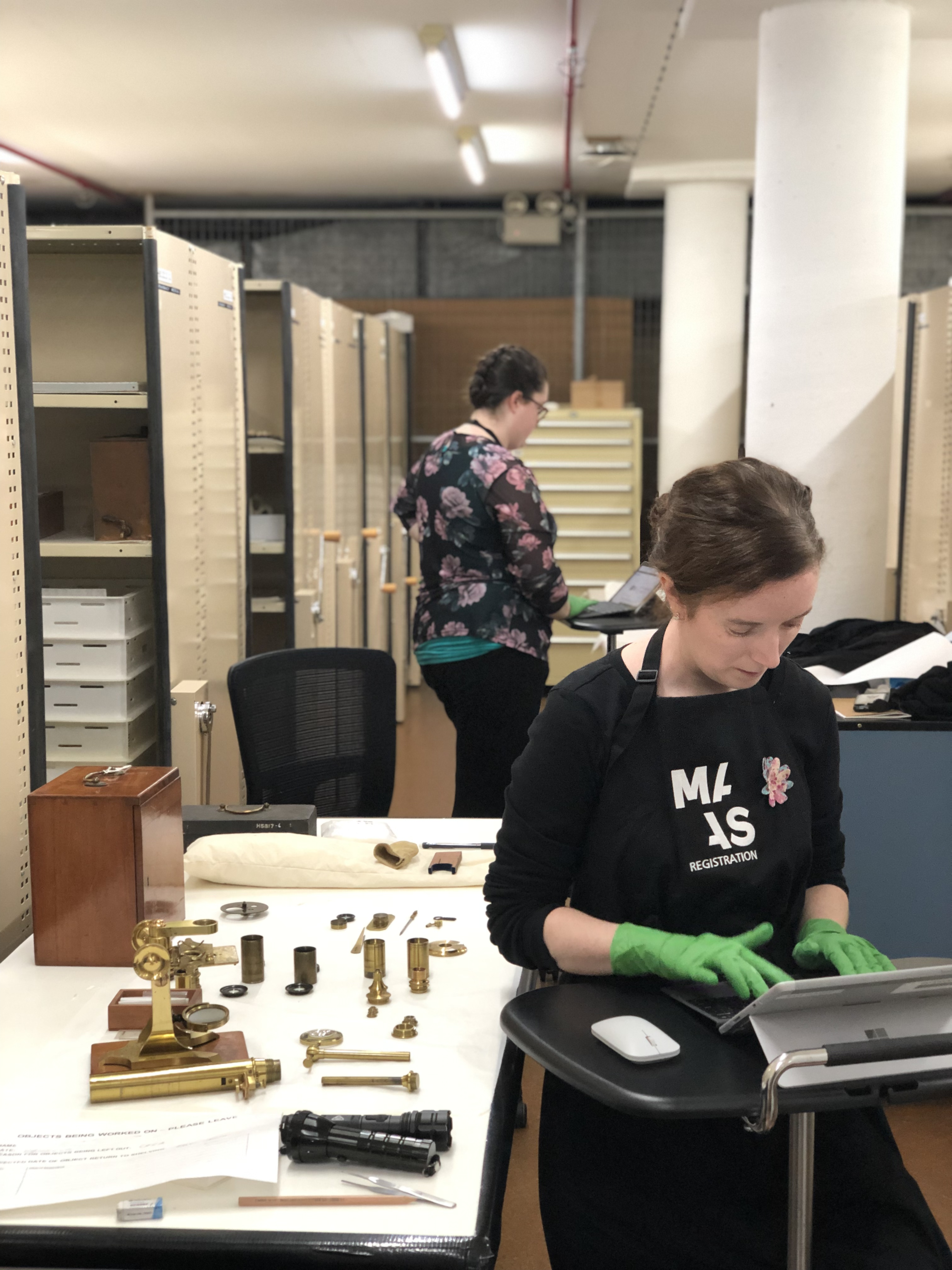
We prototyped options for some of the objects ahead of the installation for time-consuming prep jobs, such as the suspension of both the large AIDS memorial quilt at the entrance of the gallery space and the delicate lace pieces installed above the Robug IV. As much as possible, though, the decision making was left open for interpretation and revision by RRH during the final installation performance.
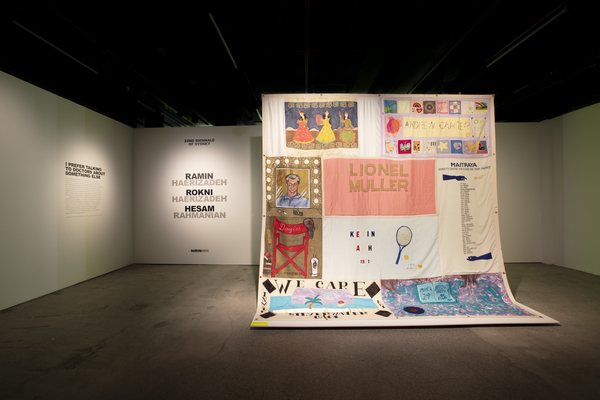
We captured new photographs of each object prior to installation in our Digitisation Studio for online publishing and promotion as well as to document the condition of the objects.
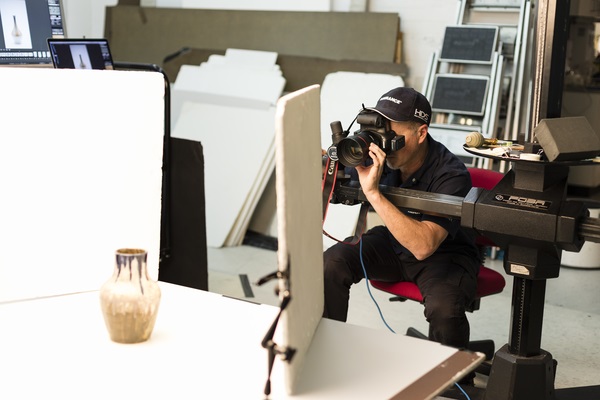
As we anticipated the groupings and placement of objects would change throughout the installation, I led the project for developing a flexible approach for writing and creating object labels that would still see them installed on time for our opening day. Labels, often seen next to displayed objects and in set groupings or listings are generally drafted and edited months in advance of an exhibition opening! To achieve our need to be responsive but also assign correct groupings, wall placements and colour assignments, we produced the labels directly from our collection database ‘EMu’ (which stands for Electronic Museum) before sending them on to our editor for review and graphic designer for final mock-up and production. During the final weeks before the installation, we worked with our Registrars and EMu extraordinaires Karen Biddle and Lucy Clark to prototype different options that pulled object information from across a range of text fields and into formats the designer could work with.
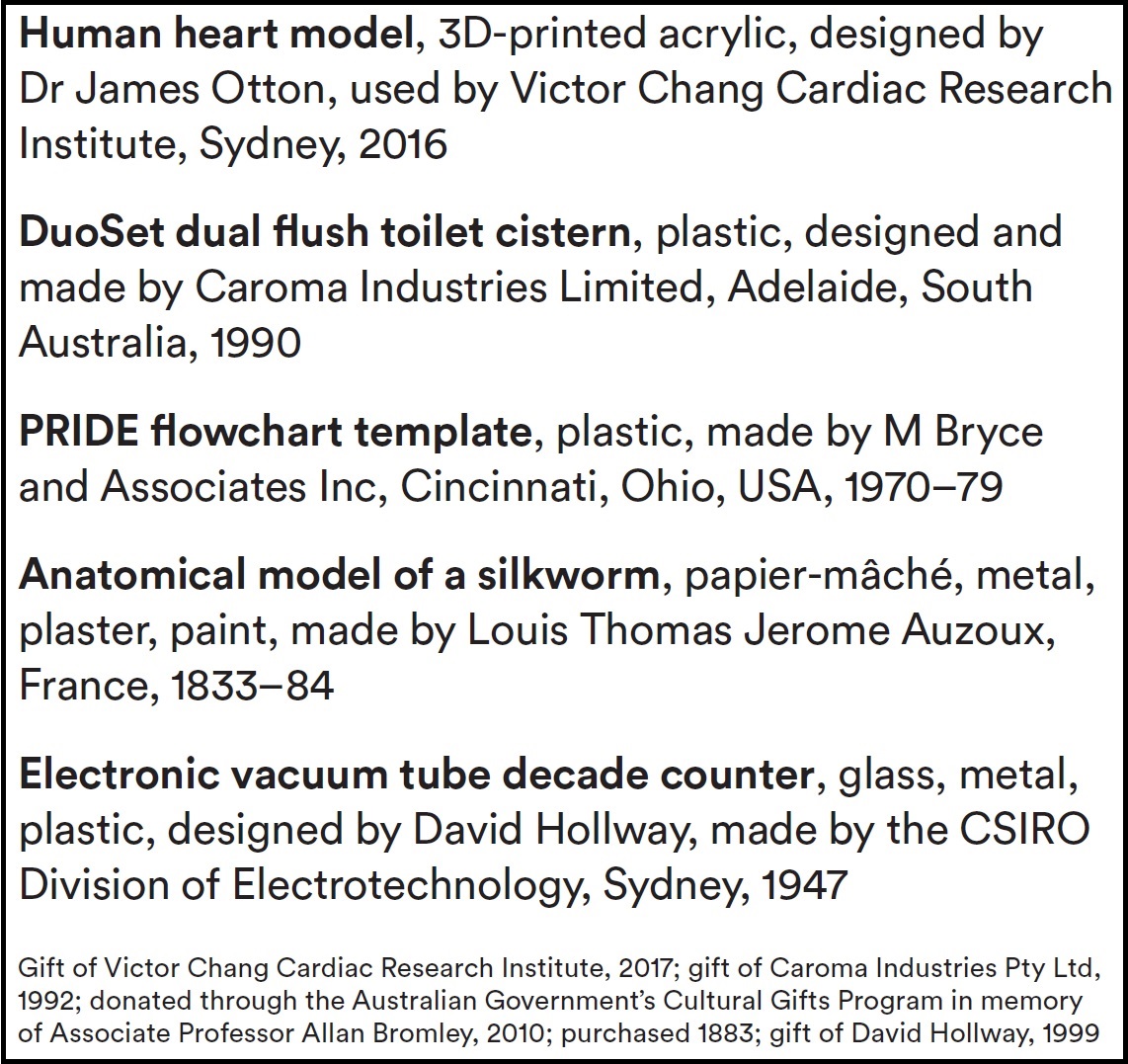
Performance
To realise the project within the two week installation time frame, there were a few basic things that needed to be in place prior to starting work in the space, such as painting the gallery space a brilliant yellow!, ensuring the wall graphics had been sent to production and that LED lighting strips were ready for use, but otherwise the installation team focussed solely on the project together in the exhibition space for the two week period workshopping ideas and delivering all the outcomes in that time.
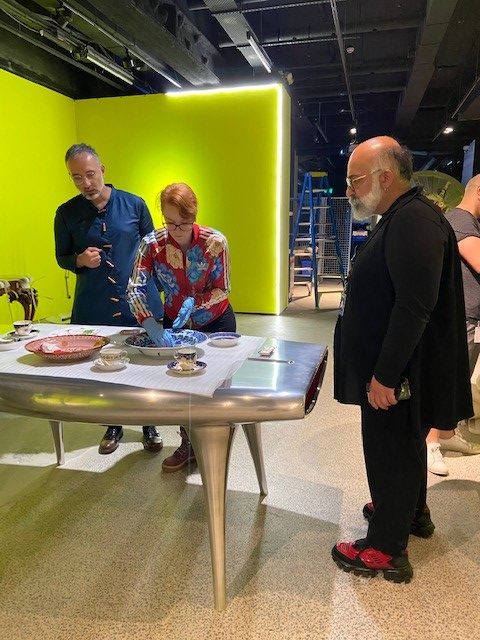
A daily morning briefing was integral to the allocation of priorities for the day and tracking progress. Our two Preparators Sach Catts and Stephen Chaumont, Conservators Tim Morris and Gosia Dudek, Registrar Julia Mackay and Lighting Technicians Peter Hermon and Neill Burtt did a brilliant job responding to new thoughts and ideas from the artists, Project Coordinator Kate, and Katie and I, as Curators, and devising creative solutions for display. This particular showcase allows the public to peer down through a laboratory viewing window into a cavity containing an intriguing array of other objects.
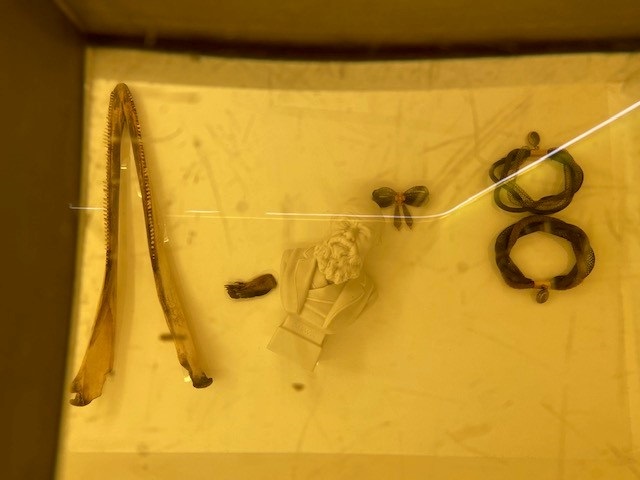
While we had to limit gallery space access to the installation team for security and safety, members of the public and other museum staff could view the progress from a short distance at either end of the gallery space; a generally uncommon practice for museum installations. And in keeping with this ‘behind the scenes’ theme, we were excited by RRH’s desire to display objects in ways often limited to back-of-house operations, such as on pallets and trolleys and in storage cages as you can see below. This approach created display safety barriers for the objects as well as an idea of the landscape in which they are normally cared for while in storage.
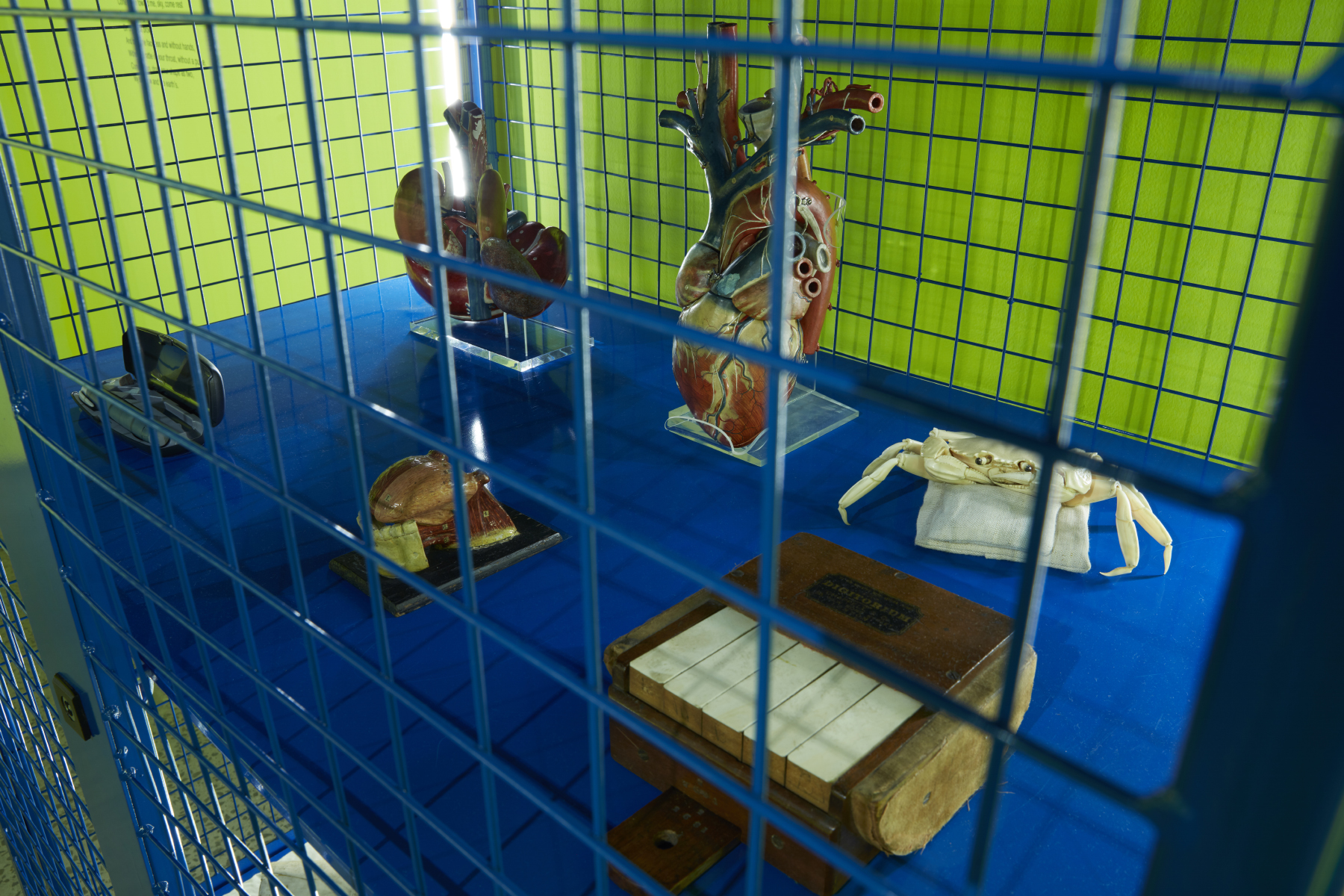
Once the object placements were finalised, we made the final tweaks to object labels with our graphic designer and editor and installed them with RRH on the Friday morning before opening on the Saturday.
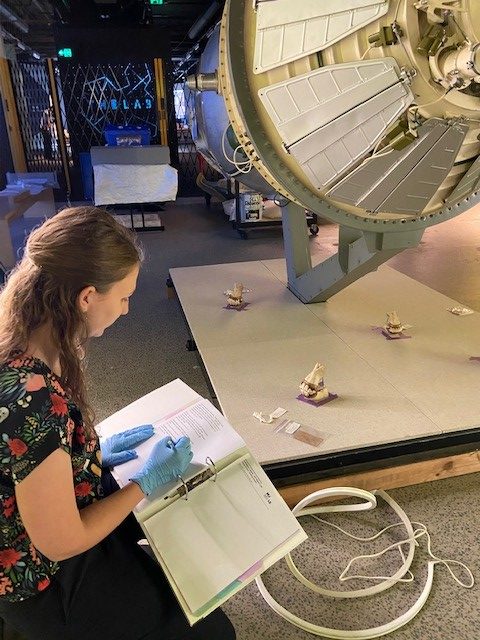
Our conservators continued throughout the last day, finalising object supports onsite while we also made final edits to the Online Collection set.
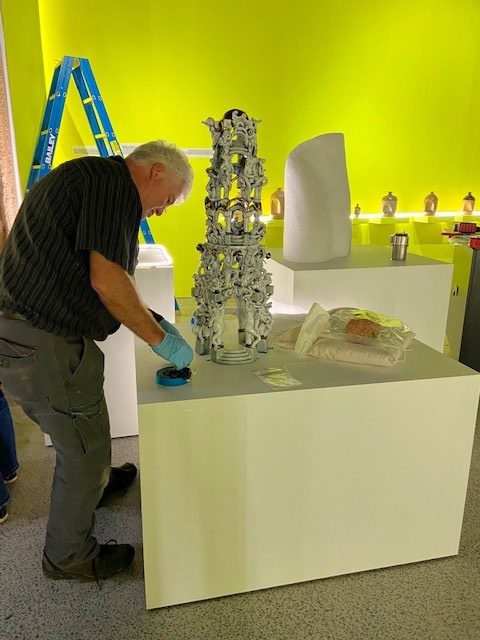
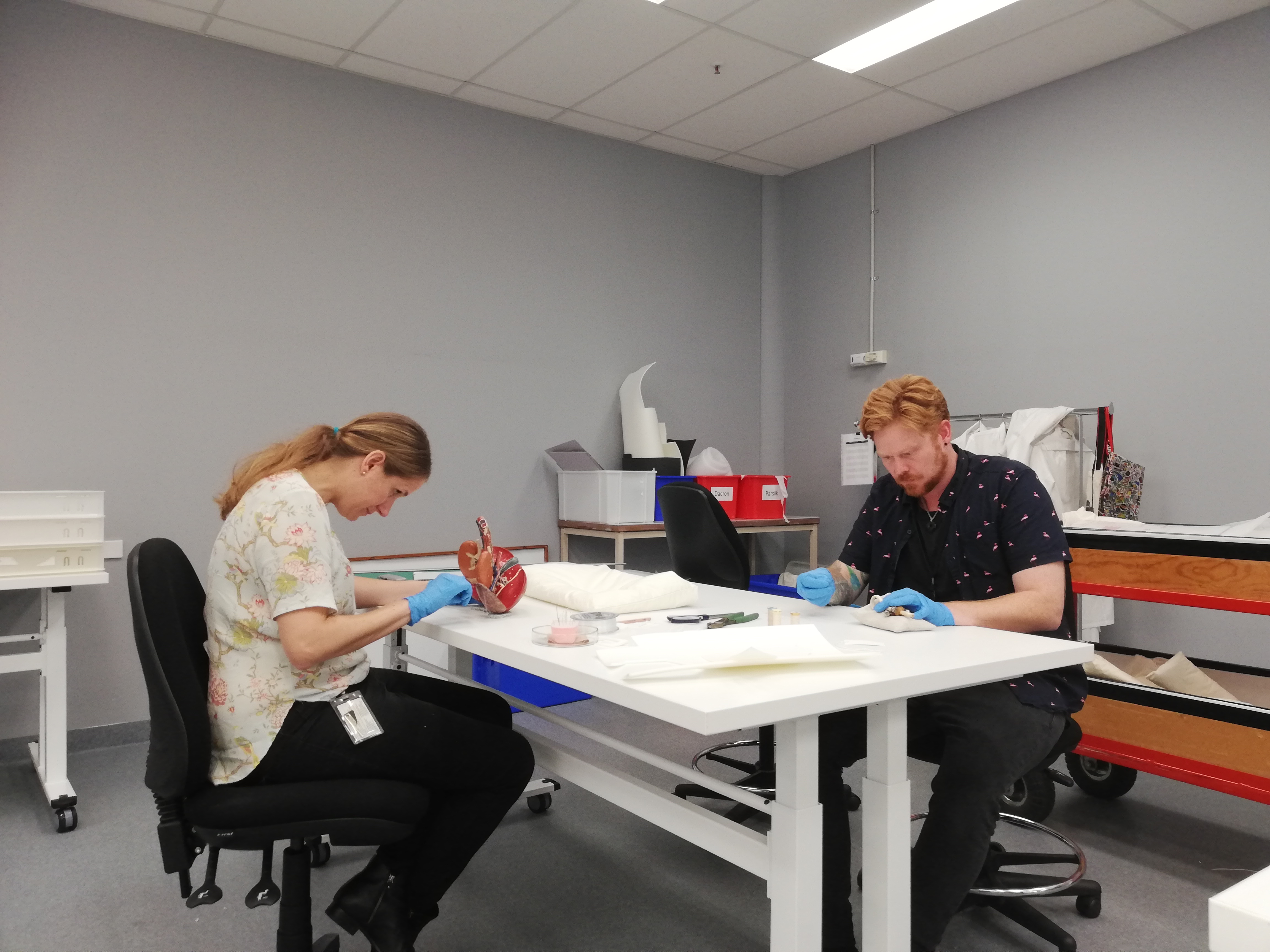
We were continually inspired by RRH’s fully considered artistic and curatorial approach and it was a privilege to work and get to know them during their time at the Powerhouse Museum. Testing out different ways of working and the flexible and responsive working environment we achieved was also a great reward for all involved. You can check out more installation views and a time lapse of the installation period here.
Written by Vanessa Thorne, Assistant Curator, Powerhouse Museum
